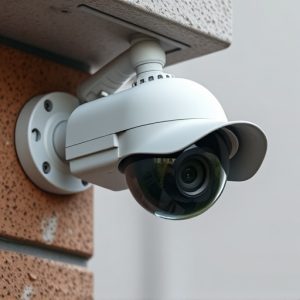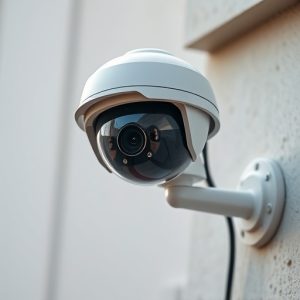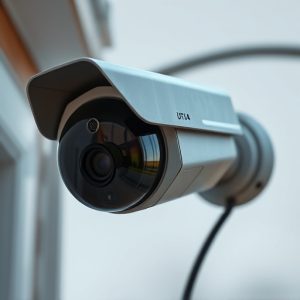Unveiling Spy Cameras: App-Based Detection’s Impact and Future
While marketed as a solution, fake CCTV camera deterrents like stickers and LED displays are easily…….
While marketed as a solution, fake CCTV camera deterrents like stickers and LED displays are easily detectable by smartphone apps that identify unique lens patterns or optical distortions. To combat this, advanced spy camera detection apps use AI and computer vision to analyze visual inputs in real-time, rendering them more effective against sophisticated hidden cameras. Future advancements in AI and computer vision will further strengthen these tools, making it increasingly difficult for covert cameras to operate undetected. For optimal security, combining such tech with other robust measures is crucial.
In an era where privacy concerns are paramount, understanding and countering hidden surveillance threats is crucial. This article explores the rising challenge of fake CCTV camera deterrents and delves into the effectiveness of spy camera lens detection apps. We analyze how these innovative tools leverage advanced technologies to identify covert lenses on smartphones, offering a practical solution for navigating our increasingly connected world. Additionally, we look at future trends in spy camera detection technology, shedding light on enhanced security measures against malicious surveillance.
- Understanding Fake CCTV Camera Deterrents
- How Spy Camera Lens Detection Apps Work
- Effectiveness of These Deterrent Measures
- Future Trends in Spy Camera Detection Technology
Understanding Fake CCTV Camera Deterrents
Fake CCTV camera deterrents, while designed to mislead and create a false sense of security, often lack effectiveness in preventing real surveillance. These devices, ranging from simple stickers to complex LED displays, claim to mimic active camera operation to deter potential spies. However, their impact is frequently limited due to technological advancements that make them easily detectable by anyone with a smartphone or basic knowledge of digital forensics. Modern apps and built-in camera features allow users to scan and identify these fake deterrents, rendering their intended purpose largely ineffective.
The effectiveness of Fake CCTV Camera Deterrents hinges on their ability to mislead the untrained eye. However, as technology evolves, so do methods of detection. Smartphone users can now employ various apps that analyze camera feeds and flag anomalies, making it easier to identify these deterrents. This shift in surveillance technology has made it crucial for both individuals and businesses to stay informed about the limitations of such devices, ensuring they complement other robust security measures rather than relying solely on them.
How Spy Camera Lens Detection Apps Work
Spy Camera Lens Detection apps have emerged as a powerful tool to combat the growing concern of hidden or fake CCTV cameras, offering a deterrent effect that could significantly alter the way we perceive privacy in public spaces. These innovative applications utilize a phone’s camera and advanced image processing algorithms to scan for infrared or visible light signals that many covert surveillance devices emit.
The process involves the app capturing images or videos and analyzing them in real-time. By identifying patterns and characteristics unique to spy cameras, such as their lens shapes or irregular reflections, these apps can alert users of potential hidden recorders nearby. This technology’s effectiveness lies in its ability to leverage everyday smartphone capabilities, making it accessible and potentially disruptive to the operation of fake CCTV cameras.
Effectiveness of These Deterrent Measures
The effectiveness of deterring spy camera lens detection using a phone largely depends on the sophistication of the technology being employed. Simple visual checks, like scanning for unfamiliar lenses or unusual attachments on devices, can be somewhat effective in identifying fake CCTV cameras due to their reliance on basic human observation. However, these methods are easily circumvented by advanced spy cameras designed to mimic legitimate security equipment or those equipped with invisible or hidden lenses.
For more robust deterrence, leveraging app-based technologies that analyze visual inputs for suspicious patterns or anomalies can prove successful. These apps use artificial intelligence and computer vision algorithms to detect unusual camera configurations, hidden lenses, or even the subtle distortions caused by spy cameras’ unique optical properties. The key lies in continuous updates to these algorithms to keep pace with evolving spy camera technology, ensuring that deterrence measures remain effective against new, more sophisticated devices.
Future Trends in Spy Camera Detection Technology
The future of spy camera detection technology looks promising, with innovations that go beyond simple visual identification. As technology advances, we can expect to see more sophisticated tools and apps capable of detecting hidden lenses in various environments. These advancements will be driven by artificial intelligence (AI) and computer vision algorithms, which can analyze real-time feeds and identify anomalies or patterns indicative of spy cameras.
One area of focus is the development of Fake CCTV Camera Deterrents—specialized devices or software designed to fool or disable hidden cameras. These deterrents could employ advanced techniques like infrared or UV light detection, making it harder for covert recorders to operate unnoticed. Such trends will be crucial in enhancing privacy and security, especially as we navigate a world where surveillance technology becomes increasingly accessible and stealthy.
As we’ve explored, fake CCTV camera deterrents have evolved from physical obstructions to sophisticated digital solutions. Spy camera lens detection apps leveraging advanced image and video analysis have proven effective in identifying hidden lenses on smartphones. However, their success hinges on continuous updates to counter ever-changing technologies. Looking ahead, future trends in spy camera detection technology will likely involve enhanced AI capabilities, deeper integration with security systems, and improved user interfaces for easier deployment and monitoring. By staying informed about these developments, individuals and organizations can ensure the ongoing effectiveness of their privacy protection measures against fake CCTV cameras.


